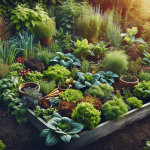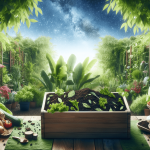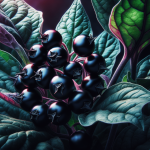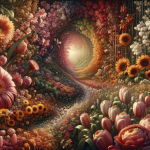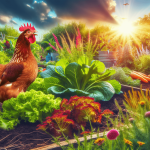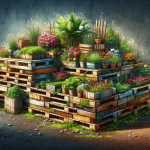This post may contain affiliate links. As an Amazon Associate, we may earn commissions from qualifying purchases.
How Do I Design A Garden That Minimizes Water Usage?
Have you ever wondered how you can create a beautiful garden while preserving an essential resource like water? Designing a garden that minimizes water usage might sound tricky at first, but it’s entirely doable with some strategic planning and a bit of creativity. Let’s take a closer look at some practical and friendly tips that will help you design a water-efficient garden without losing its charm or vibrancy.
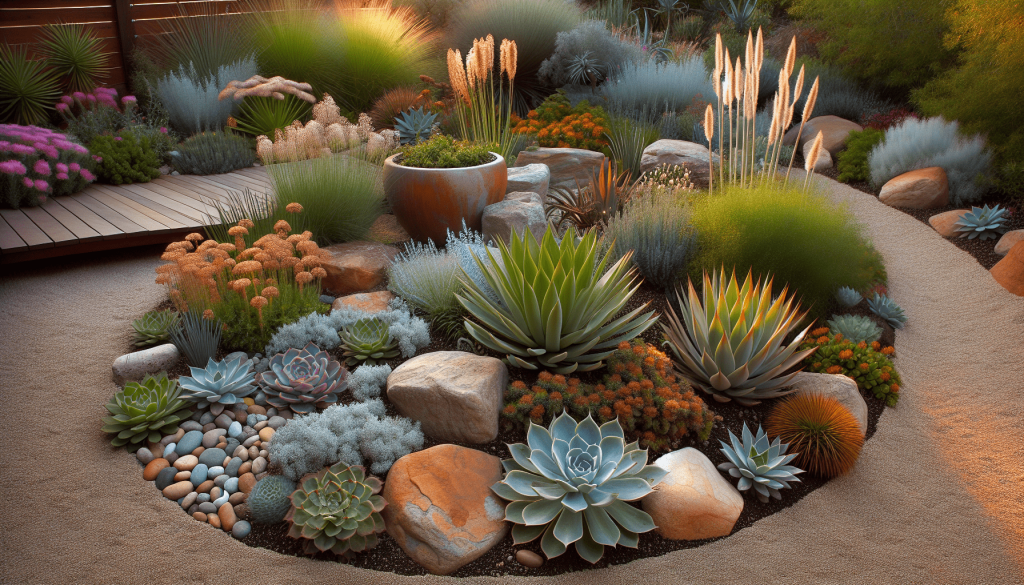
Understanding Water-Wise Gardening
What is Water-Wise Gardening?
Water-wise gardening, often called xeriscaping, focuses on selecting plants, soils, and overall garden design that reduces or eliminates the need for supplemental water from irrigation. It’s a method that not only helps you save water but also cuts down on maintenance time and costs.
Benefits of Water-Wise Gardening
It’s not just about saving water. A water-wise garden can lead to lower water bills, reduced lawn mowing, and even decreased chemical use since many drought-resistant plants are less prone to pests and diseases. Imagine sipping your morning coffee while admiring a lush, low-maintenance garden that cost you less in every sense!
Planning Your Water-Efficient Garden
Assessing Your Space
First things first, know your garden! Assessing your space involves understanding the amount of sunlight, shade, and wind exposure your garden gets throughout the day.
Soil Type and Improvement
Your soil holds the key to water efficiency. Sandy soils drain quickly and may need organic matter to help retain moisture. Clay soils, on the other hand, hold water but can become compacted. Improving your soil with compost or well-rotted manure can increase its ability to retain moisture and nutrients.
Creating Zones
Consider creating different zones within your garden based on water needs. Group plants with similar watering requirements together to prevent over or under-watering. This zoning makes your watering routine more efficient and targeted, saving both time and water.
Choosing the Right Plants
Native Plants
Native plants are naturally accustomed to the local climate and soil conditions. They require less water, fertilizer, and pesticides, making them ideal for a water-efficient garden. Besides, native plants can provide a haven for local wildlife, adding another layer of beauty and sustainability to your garden.
Drought-Tolerant Plants
In addition to native plants, think about incorporating drought-tolerant plants. These plants can thrive in dry conditions and often have characteristics like deep root systems, small or waxy leaves, and light-colored foliage to reduce water loss.
Here’s a handy table of popular drought-tolerant plants:
| Plant | Sun/ Shade | Description |
|---|---|---|
| Lavender | Full Sun | Fragrant, hardy with purple blooms |
| Salvias | Full Sun | Vibrant, colorful flowers |
| Yucca | Full Sun | Striking, architectural foliage |
| Sedum | Sun/Part Shade | Succulent leaves, great for groundcover |
| Agave | Full Sun | Unique, spiky appearance |
| California Poppy | Full Sun | Bright, orange flowers |
| Rosemary | Full Sun | Aromatic, culinary herb |
| Sage | Full Sun | Versatile herb with purple blooms |
Using Perennials
Perennials are plants that come back year after year. They use water more efficiently than many annuals because their root systems are more established. This makes them a smart choice for a water-efficient garden.
Efficient Irrigation Techniques
Drip Irrigation
Drip irrigation is a game-changer for water savings. This method delivers water directly to the plant roots, reducing evaporation and runoff. It’s especially useful for vegetable gardens and individual plants.
Soaker Hoses
Soaker hoses are porous hoses that lay on the ground, allowing water to seep out slowly and efficiently. This method is a bit gentler than drip irrigation and can be a great way to water larger garden areas without waste.
Timing is Everything
Watering your garden at the right time of day makes a big difference. Early mornings or late evenings are ideal as it minimizes evaporation and allows plants to absorb water more effectively. Avoid watering during the hottest parts of the day.
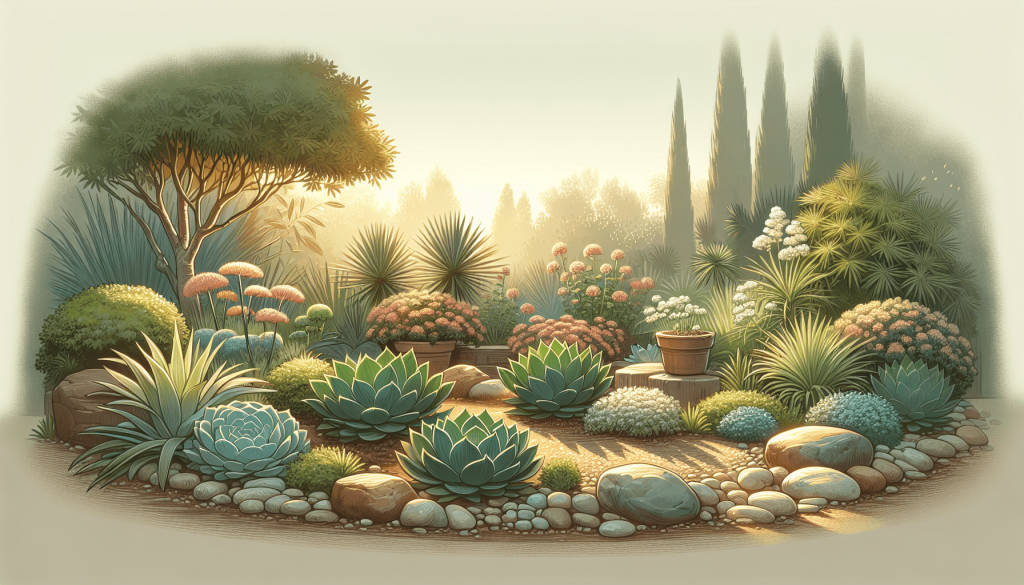
Mulching Your Garden
Types of Mulch
Mulch is your garden’s best friend. It helps retain moisture, reduces weeds, and keeps roots cool. You can use organic mulches like wood chips, straw, or compost, or inorganic mulches like gravel.
Applying Mulch Correctly
Spread a layer of mulch around your plants, about 2-3 inches deep. Be careful not to pile it up against the stems of plants as it can cause rot. This simple step will drastically cut down on your watering needs.
Reducing Lawn Areas
Alternatives to Lawns
Lawns are notorious water guzzlers. Consider replacing parts of your lawn with ground covers, gravel paths, or mulched areas. These alternatives are not only more water-efficient but can also add texture and interest to your garden.
Low-Water Turf Options
If you must have a lawn, look into drought-tolerant grass species like Bermuda grass, Buffalo grass, or Zoysia grass. These grasses require less water and care while still providing that lush, green look.
Adding Hardscaping
Benefits of Hardscaping
Incorporating hardscaping elements like patios, walkways, and stone walls can greatly reduce the amount of water needed for your garden. Plus, they can enhance the aesthetic appeal and functionality of your outdoor space.
Hardscaping Materials
Choose permeable materials like gravel, brick, or permeable pavers that allow rainwater to seep into the ground rather than running off. This helps with groundwater recharge and reduces the need for supplemental watering.
Capturing Rainwater
Rain Barrels
Rain barrels are an excellent way to capture and store rainwater from your gutters. This water can be used to irrigate your garden during dry periods. Place your barrel in an accessible spot and connect it to a soaker hose or drip irrigation system for easy use.
Rain Gardens
A rain garden is a shallow depression that collects rainwater runoff from roofs, driveways, and streets. It is planted with water-tolerant plants that help filter and absorb the water, reducing the need for supplemental irrigation.
Smart Garden Design Practices
Planting in Contours
Design your garden with the natural contours of your land. Planting on slopes can help direct water flow toward your plants’ root zones, maximizing water use and minimizing runoff.
Windbreaks
Create windbreaks using hedges, fences, or strategically placed plants to reduce water loss due to wind. Windbreaks can also provide shelter and reduce garden evaporation rates, keeping your plants more hydrated.
Using Shade Wisely
Designing your garden to include shaded areas can reduce water evaporation significantly. Use trees, pergolas, or shade sails to create cooler microclimates within your garden.
Maintaining Your Water-Efficient Garden
Regular Inspections
Keep an eye on your irrigation systems, mulch layers, and plant health. Regular inspections help catch any issues early, preventing water waste and ensuring your garden remains healthy and thriving.
Seasonal Adjustments
Adapt your watering schedule to the changing seasons. Reduce watering frequency during cooler months and increase it during the hotter parts of the year. Also, adjust mulch levels and consider adding or removing plants based on seasonal requirements.
Sustainable Practices
Embrace sustainable gardening practices like composting, using organic fertilizers, and choosing non-toxic pest control methods. These practices support a healthier garden ecosystem while aligning with water-wise principles.
Conclusion
So, how do you design a garden that minimizes water usage? It’s all about being mindful of your plant choices, irrigation practices, and garden layout. By choosing native and drought-tolerant plants, utilizing efficient watering systems, mulching, and incorporating hardscaping and rainwater capture, you can create a stunning garden that thrives with minimal water. Whether you’re transforming an existing space or starting from scratch, these friendly tips and practical solutions will help you achieve a beautiful, sustainable, water-wise garden. Enjoy the process, and remember, every little step toward water conservation makes a big impact!


